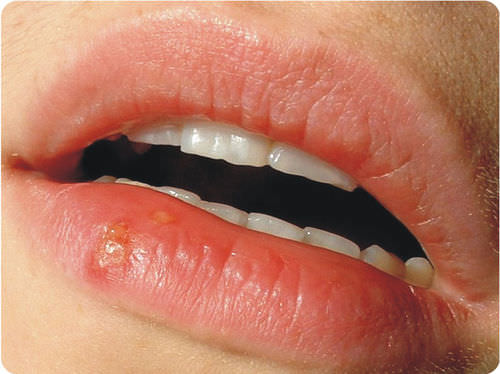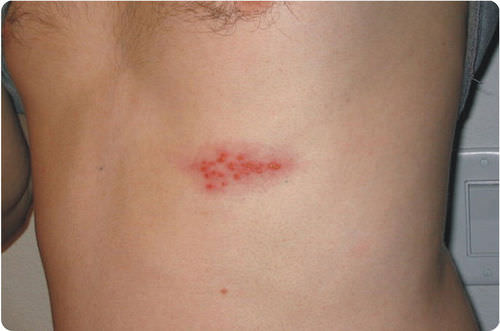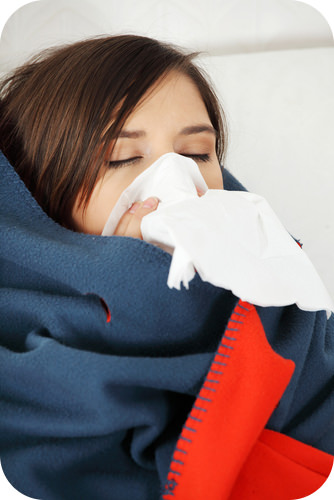7.5: Viral Disease
- Page ID
- 12189
\( \newcommand{\vecs}[1]{\overset { \scriptstyle \rightharpoonup} {\mathbf{#1}} } \)
\( \newcommand{\vecd}[1]{\overset{-\!-\!\rightharpoonup}{\vphantom{a}\smash {#1}}} \)
\( \newcommand{\dsum}{\displaystyle\sum\limits} \)
\( \newcommand{\dint}{\displaystyle\int\limits} \)
\( \newcommand{\dlim}{\displaystyle\lim\limits} \)
\( \newcommand{\id}{\mathrm{id}}\) \( \newcommand{\Span}{\mathrm{span}}\)
( \newcommand{\kernel}{\mathrm{null}\,}\) \( \newcommand{\range}{\mathrm{range}\,}\)
\( \newcommand{\RealPart}{\mathrm{Re}}\) \( \newcommand{\ImaginaryPart}{\mathrm{Im}}\)
\( \newcommand{\Argument}{\mathrm{Arg}}\) \( \newcommand{\norm}[1]{\| #1 \|}\)
\( \newcommand{\inner}[2]{\langle #1, #2 \rangle}\)
\( \newcommand{\Span}{\mathrm{span}}\)
\( \newcommand{\id}{\mathrm{id}}\)
\( \newcommand{\Span}{\mathrm{span}}\)
\( \newcommand{\kernel}{\mathrm{null}\,}\)
\( \newcommand{\range}{\mathrm{range}\,}\)
\( \newcommand{\RealPart}{\mathrm{Re}}\)
\( \newcommand{\ImaginaryPart}{\mathrm{Im}}\)
\( \newcommand{\Argument}{\mathrm{Arg}}\)
\( \newcommand{\norm}[1]{\| #1 \|}\)
\( \newcommand{\inner}[2]{\langle #1, #2 \rangle}\)
\( \newcommand{\Span}{\mathrm{span}}\) \( \newcommand{\AA}{\unicode[.8,0]{x212B}}\)
\( \newcommand{\vectorA}[1]{\vec{#1}} % arrow\)
\( \newcommand{\vectorAt}[1]{\vec{\text{#1}}} % arrow\)
\( \newcommand{\vectorB}[1]{\overset { \scriptstyle \rightharpoonup} {\mathbf{#1}} } \)
\( \newcommand{\vectorC}[1]{\textbf{#1}} \)
\( \newcommand{\vectorD}[1]{\overrightarrow{#1}} \)
\( \newcommand{\vectorDt}[1]{\overrightarrow{\text{#1}}} \)
\( \newcommand{\vectE}[1]{\overset{-\!-\!\rightharpoonup}{\vphantom{a}\smash{\mathbf {#1}}}} \)
\( \newcommand{\vecs}[1]{\overset { \scriptstyle \rightharpoonup} {\mathbf{#1}} } \)
\( \newcommand{\vecd}[1]{\overset{-\!-\!\rightharpoonup}{\vphantom{a}\smash {#1}}} \)
\(\newcommand{\avec}{\mathbf a}\) \(\newcommand{\bvec}{\mathbf b}\) \(\newcommand{\cvec}{\mathbf c}\) \(\newcommand{\dvec}{\mathbf d}\) \(\newcommand{\dtil}{\widetilde{\mathbf d}}\) \(\newcommand{\evec}{\mathbf e}\) \(\newcommand{\fvec}{\mathbf f}\) \(\newcommand{\nvec}{\mathbf n}\) \(\newcommand{\pvec}{\mathbf p}\) \(\newcommand{\qvec}{\mathbf q}\) \(\newcommand{\svec}{\mathbf s}\) \(\newcommand{\tvec}{\mathbf t}\) \(\newcommand{\uvec}{\mathbf u}\) \(\newcommand{\vvec}{\mathbf v}\) \(\newcommand{\wvec}{\mathbf w}\) \(\newcommand{\xvec}{\mathbf x}\) \(\newcommand{\yvec}{\mathbf y}\) \(\newcommand{\zvec}{\mathbf z}\) \(\newcommand{\rvec}{\mathbf r}\) \(\newcommand{\mvec}{\mathbf m}\) \(\newcommand{\zerovec}{\mathbf 0}\) \(\newcommand{\onevec}{\mathbf 1}\) \(\newcommand{\real}{\mathbb R}\) \(\newcommand{\twovec}[2]{\left[\begin{array}{r}#1 \\ #2 \end{array}\right]}\) \(\newcommand{\ctwovec}[2]{\left[\begin{array}{c}#1 \\ #2 \end{array}\right]}\) \(\newcommand{\threevec}[3]{\left[\begin{array}{r}#1 \\ #2 \\ #3 \end{array}\right]}\) \(\newcommand{\cthreevec}[3]{\left[\begin{array}{c}#1 \\ #2 \\ #3 \end{array}\right]}\) \(\newcommand{\fourvec}[4]{\left[\begin{array}{r}#1 \\ #2 \\ #3 \\ #4 \end{array}\right]}\) \(\newcommand{\cfourvec}[4]{\left[\begin{array}{c}#1 \\ #2 \\ #3 \\ #4 \end{array}\right]}\) \(\newcommand{\fivevec}[5]{\left[\begin{array}{r}#1 \\ #2 \\ #3 \\ #4 \\ #5 \\ \end{array}\right]}\) \(\newcommand{\cfivevec}[5]{\left[\begin{array}{c}#1 \\ #2 \\ #3 \\ #4 \\ #5 \\ \end{array}\right]}\) \(\newcommand{\mattwo}[4]{\left[\begin{array}{rr}#1 \amp #2 \\ #3 \amp #4 \\ \end{array}\right]}\) \(\newcommand{\laspan}[1]{\text{Span}\{#1\}}\) \(\newcommand{\bcal}{\cal B}\) \(\newcommand{\ccal}{\cal C}\) \(\newcommand{\scal}{\cal S}\) \(\newcommand{\wcal}{\cal W}\) \(\newcommand{\ecal}{\cal E}\) \(\newcommand{\coords}[2]{\left\{#1\right\}_{#2}}\) \(\newcommand{\gray}[1]{\color{gray}{#1}}\) \(\newcommand{\lgray}[1]{\color{lightgray}{#1}}\) \(\newcommand{\rank}{\operatorname{rank}}\) \(\newcommand{\row}{\text{Row}}\) \(\newcommand{\col}{\text{Col}}\) \(\renewcommand{\row}{\text{Row}}\) \(\newcommand{\nul}{\text{Nul}}\) \(\newcommand{\var}{\text{Var}}\) \(\newcommand{\corr}{\text{corr}}\) \(\newcommand{\len}[1]{\left|#1\right|}\) \(\newcommand{\bbar}{\overline{\bvec}}\) \(\newcommand{\bhat}{\widehat{\bvec}}\) \(\newcommand{\bperp}{\bvec^\perp}\) \(\newcommand{\xhat}{\widehat{\xvec}}\) \(\newcommand{\vhat}{\widehat{\vvec}}\) \(\newcommand{\uhat}{\widehat{\uvec}}\) \(\newcommand{\what}{\widehat{\wvec}}\) \(\newcommand{\Sighat}{\widehat{\Sigma}}\) \(\newcommand{\lt}{<}\) \(\newcommand{\gt}{>}\) \(\newcommand{\amp}{&}\) \(\definecolor{fillinmathshade}{gray}{0.9}\)
Viral or bacterial?
Doesn't look like fun. The flu is caused by an influenza virus. And usually a slightly different virus every season.
Viruses and Human Disease
Viruses cause many human diseases. In addition to the flu and HIV, viruses cause rabies, measles, diarrheal diseases, hepatitis, polio, cold sores and other diseases (see Figure below). Viral diseases range from mild to fatal. One way viruses cause disease is by causing host cells to burst open and die. Viruses may also cause disease without killing host cells. They may cause illness by disrupting homeostasis in host cells.
 Cold Sore. Cold sores are caused by a herpes virus.
Cold Sore. Cold sores are caused by a herpes virus.Some viruses live in a dormant state inside the body. This is called latency. For example, the virus that causes chicken pox may infect a young child and cause the short-term disease chicken pox. Then the virus may remain latent in nerve cells within the body for decades. The virus may re-emerge later in life as the disease called shingles. In shingles, the virus causes painful skin rashes with blisters (see Figure below).
 Shingles. Shingles is a disease caused by the same virus that causes chicken pox.
Shingles. Shingles is a disease caused by the same virus that causes chicken pox.Some viruses can cause cancer. For example, human papillomavirus (HPV) causes cancer of the cervix in females. Hepatitis B virus causes cancer of the liver. A viral cancer is likely to develop only after a person has been infected with a virus for many years.
The Flu
Influenza, or flu, is a contagious respiratory illness caused by influenza viruses. Influenza spreads around the world in seasonal epidemics. An epidemic is an outbreak of a disease within a population of people during a specific time. Every year in the United States, about 200,000 people are hospitalized and 36,000 people die from the flu. Flu pandemics can kill millions of people. A pandemic is an epidemic that spreads through human populations across a large region (for example a continent), or even worldwide. Three influenza pandemics occurred in the 20th century and killed tens of millions of people, with each of these pandemics being caused by the appearance of a new strain of the virus. Most influenza strains can be inactivated easily by disinfectants and detergents.
Emerging Viral Diseases
Modern modes of transportation allow more people and products to travel around the world at a faster pace. They also open the airways to the transcontinental movement of infectious disease vectors. One example of this occurring is West Nile Virus, which scientists believe was introduced to the United States by an infected air traveler. With the use of air travel, people are able to go to foreign lands, contract a disease and not have any symptoms of illness until they get home, possibly exposing others to the disease along the way.
Often, new diseases result from the spread of an existing disease from animals to humans. A disease that can be spread from animals to humans is called a zoonosis. When a disease breaks out, scientists called epidemiologists investigate the outbreak, looking for its cause. Epidemiologists are like detectives trying to solve a crime. The information epidemiologists learn is important to understand the pathogen, and help prevent future outbreaks of disease.
A deadly strain of avian flu virus named H5N1 has posed the greatest risk for a new influenza pandemic since it first killed humans in Asia in the 1990s. The virus is passed from infected birds to humans. Fortunately, the virus has not mutated to a form that spreads easily between people.
Several lethal viruses that cause viral hemorrhagic fever have been discovered, two of which are shown in the Figure below. Ebola outbreaks have been limited mainly to remote areas of the world. However, they have gained extensive media attention because of the high mortality rate—23 percent to 90 percent—depending on the strain. The primary hosts of the viruses are thought to be apes in west central Africa, but the virus has also been isolated from bats in the same region.

The Ebola virus (left), and Marburg virus (right), are viruses that cause hemorrhagic fevers that can cause multiple organ failure and death.
Ebola is a rare and deadly disease caused by infection with a strain of Ebola virus. The 2014 Ebola epidemic affected multiple countries in West Africa, including Guinea, Sierra Leone and Liberia. Ebola is spread through direct contact with blood and body fluids of a person infected by and already showing symptoms of Ebola. Ebola is not spread through the air, water, food, or mosquitoes.
People get exposed to new and rare zoonoses when they move into new areas and encounter wild animals. For example, severe acute respiratory syndrome (SARS) is a respiratory disease which is caused by the SARS coronavirus. An outbreak in China in 2003 was linked to the handling and consumption of wild civet cats sold as food in a market. In 2005, two studies identified a number of SARS-like coronaviruses in Chinese bats. It is likely that the virus spread from bats to civets, and then to humans.
A novel type of coronavirus was discovered in 2019, first in China and then spread to other locations globally, including the United States. The origin is thought to likely be from an animal that was then transmitted to humans. The novel virus causing the recent pandemic has been named Severe Acute Respiratory Syndrome - 2 (SARS-CoV-2). The disease itself is referred to as coronavirus disease 2019 (COVID-19). The impact of this disease has led to widespread lockdown and stay-at-home policies enacted by governments globally to mitigate the spread of the virus.
Summary
- Viruses cause many human diseases by killing host cells or disturbing their homeostasis.
- Viruses are not affected by antibiotics. Several viral diseases can be treated with antiviral drugs or prevented with vaccines.
- Several emerging viral diseases exist: West Nile Virus, Ebola, SARS, and COVID-19.
Explore More
Explore More I
Use the resource below to answer the questions that follow.
- Which is better: Soap or hand sanitizer?: https://www.youtube.com/watch?v=x7KKkElpyKQ
- What is the outer surface of the coronavirus that causes COVID-19 made of?
- What are amphiphiles? Which biological molecules do they resemble?
- Distinguish between how hand sanitizer versus soap and water disrupt the outer membrane of the coronavirus that causes COVID-19.
- Is hand sanitizer or soap and water better to use to prevent the spread of COVID-19?
- What are the benefits to using soap and water to prevent the spread of COVID-19?
Explore More II
Use the resource below to answer the questions that follow.
- U.S. Mortality: Death Certificates Listing Pneumonia, Influenza, and COVID-19:
- The peak percent of deaths is observed as a result of what disease(s)?
- What might you infer about the disease(s) that are causing the percent of deaths at this peak?
- The graph indicates a peak in the percent of deaths ending the week of April 11, 2020. During this time in the US (March 2020 - May 2020), widespread stay-at-home policies were put into place with strict social distancing guidelines. According to the data provided, how do you think these measures impacted the percent of deaths during this time?
Review
- How do viruses cause human disease?
- What is an epidemic? Why can the flu be considered an epidemic?
- What is latency? Give an example of a virus that undergoes this process.
| Image | Reference | Attributions |
 |
[Figure 1] | Credit: Courtesy of the U.S. Food and Drug Administration (FDA);Image copyright Monika Wisniewska, 2014;Ebola virus: Courtesy of CDC/Cynthia Goldsmith; Marburg virus: Courtesy of CDC/Dr. Erskine Palmer, Russell Regnery, Ph.D. Source: commons.wikimedia.org/wiki/File:Heart_attack_diagram.png ; http://www.shutterstock.com ; Ebola virus: commons.wikimedia.org/wiki/File:Ebola_Virus_TEM_PHIL_1832_lores.jpg ; Marburg virus: commons.wikimedia.org/wiki/File:Marburg_virus.jpg License: Used under license from Shutterstock.com |
 |
[Figure 2] | Credit: User:Metju12/Wikimedia Commons;Ebola virus: Courtesy of CDC/Cynthia Goldsmith; Marburg virus: Courtesy of CDC/Dr. Erskine Palmer, Russell Regnery, Ph.D. Source: commons.wikimedia.org/wiki/File:Herpes_labialis.jpg ; Ebola virus: commons.wikimedia.org/wiki/File:Ebola_Virus_TEM_PHIL_1832_lores.jpg ; Marburg virus: commons.wikimedia.org/wiki/File:Marburg_virus.jpg License: Public Domain |
 |
[Figure 3] | Credit: Preston Hunt Source: commons.wikimedia.org/wiki/File:Shingles_on_the_chest.jpg License: CC BY 3.0 |
 |
[Figure 4] | Credit: Ebola virus: Courtesy of CDC/Cynthia Goldsmith; Marburg virus: Courtesy of CDC/Dr. Erskine Palmer, Russell Regnery, Ph.D. Source: Ebola virus: commons.wikimedia.org/wiki/File:Ebola_Virus_TEM_PHIL_1832_lores.jpg ; Marburg virus: commons.wikimedia.org/wiki/File:Marburg_virus.jpg License: Public Domain |

